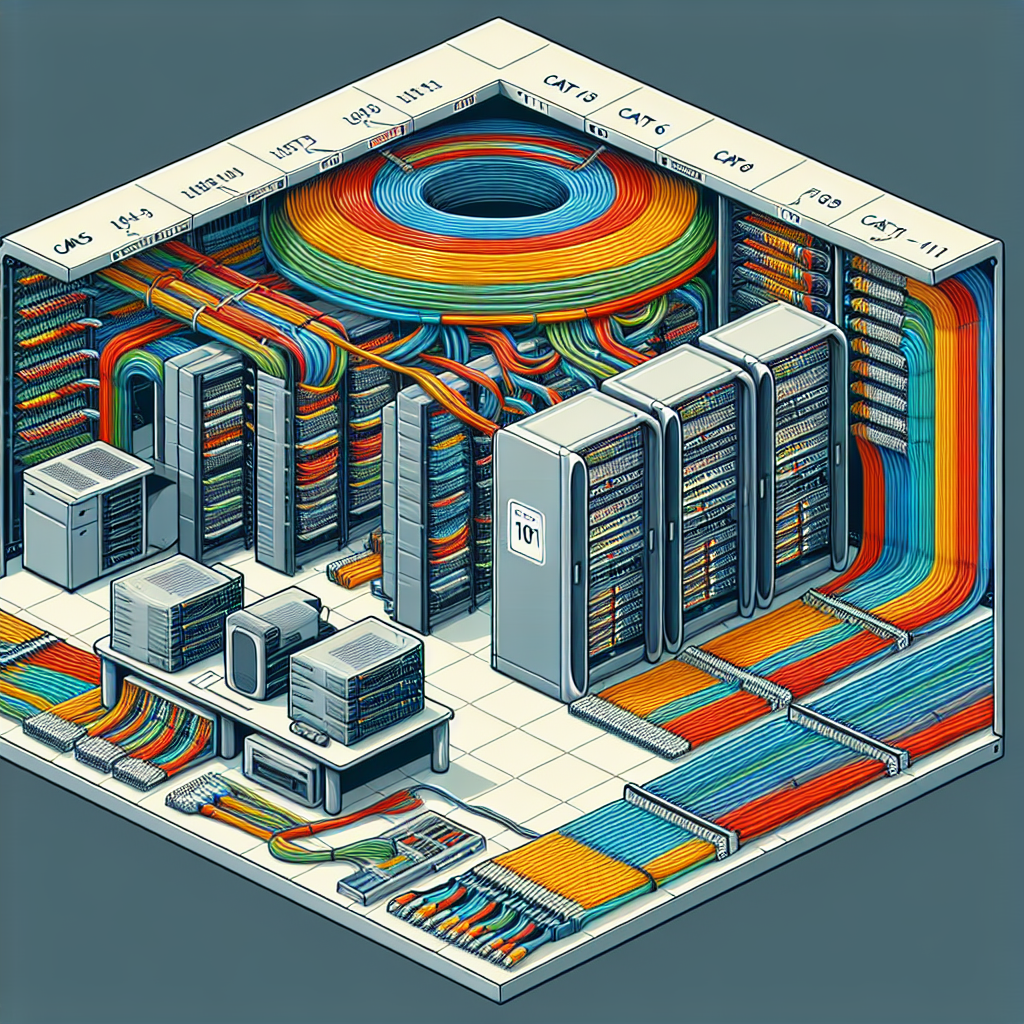Your cart is currently empty!
Data Center Cabling 101: A Beginner’s Guide to Structured Cabling Systems

Data Center Cabling 101: A Beginner’s Guide to Structured Cabling Systems
In today’s digital age, data centers play a crucial role in storing and managing vast amounts of information for businesses of all sizes. And at the heart of every data center is a structured cabling system that ensures seamless connectivity and efficient data transmission.
What is structured cabling?
Structured cabling refers to the organized and standardized approach to cabling infrastructure within a data center. It involves the installation of cables, connectors, and other hardware components in a way that allows for easy management and maintenance. By following industry best practices and standards, structured cabling systems provide a reliable and scalable solution for handling the networking needs of a data center.
Types of cables used in structured cabling
There are several types of cables commonly used in structured cabling systems, each serving a specific purpose:
1. Copper cables: Copper cables, such as Cat5e, Cat6, and Cat6a, are commonly used for Ethernet networking within data centers. They provide reliable and high-speed connectivity for devices such as servers, switches, and storage arrays.
2. Fiber optic cables: Fiber optic cables are used for long-distance connections and high-speed data transmission. They are ideal for connecting data center buildings or linking servers in different parts of the facility.
3. Coaxial cables: Coaxial cables are used for transmitting signals over short distances, such as connecting servers to network switches or routers.
Components of a structured cabling system
A structured cabling system consists of several key components that work together to create a reliable and efficient network infrastructure:
1. Patch panels: Patch panels are used to connect cables from different devices to a central point, such as a network switch. They provide a convenient way to manage and organize cables within a data center.
2. Racks and cabinets: Racks and cabinets are used to house networking equipment, servers, and other hardware components. They help to keep the data center organized and ensure proper ventilation and cooling for the equipment.
3. Cable management: Cable management solutions, such as cable trays, ties, and clips, are used to organize and secure cables within the data center. Proper cable management helps to prevent tangling and damage to cables, and makes it easier to troubleshoot network issues.
Benefits of structured cabling
Implementing a structured cabling system in a data center offers several benefits, including:
1. Scalability: Structured cabling systems are designed to be easily scalable, allowing businesses to add new devices or expand their network infrastructure as needed.
2. Reliability: By following industry standards and best practices, structured cabling systems provide a reliable and robust network infrastructure that minimizes downtime and ensures consistent performance.
3. Flexibility: Structured cabling systems are flexible and can support various types of networking technologies, making it easy to adapt to changing business needs.
In conclusion, structured cabling is a fundamental component of every data center, providing the foundation for a reliable and efficient network infrastructure. By understanding the basics of structured cabling systems and following industry best practices, businesses can ensure seamless connectivity and optimal performance for their data center operations.

Leave a Reply